1. Wooden Wheelbarrows
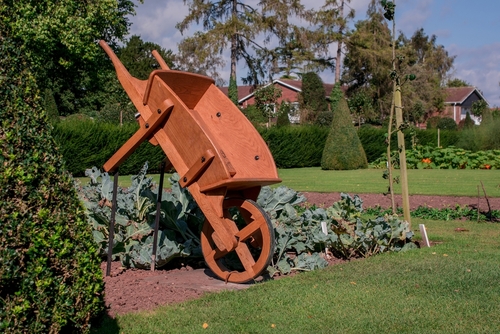
Early wooden wheelbarrows were handcrafted and often painted in bright colors. Gardeners used them for hauling soil, compost, and plants around estates and farms. Unlike their modern metal counterparts, these had charm and individuality, with designs that varied by region and maker. Surviving examples, especially those with original paint, are increasingly rare.
Collectors appreciate their rustic, sculptural quality—some even repurpose them as planters or display pieces. Original wheelbarrows with iron-strapped wheels are especially valuable. They reflect the labor and craftsmanship of a slower-paced agricultural world. Owning one feels like holding a piece of working history.
2. Wooden Seed Boxes
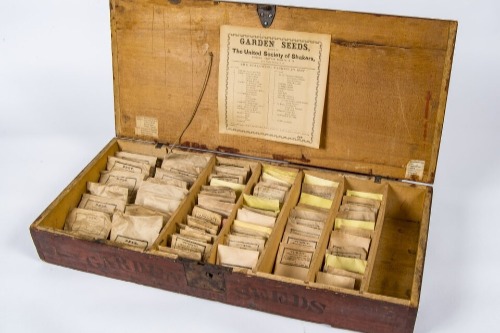
Seed companies in the late 19th and early 20th centuries sent out wooden seed boxes to hardware stores as display cases. These boxes, often emblazoned with colorful lithograph labels, showcased the company’s brand identity and artistry. Because they were meant to be discarded after the season, few survived intact. That scarcity makes them especially desirable among collectors.
Each box offers a window into the marketing and agricultural practices of its time. Many collectors display them in kitchens, potting sheds, or farmhouses as nostalgic décor. Boxes from companies like Ferry-Morse or D.M. Ferry & Co. are particularly prized. Their combination of rarity, design, and historical charm keeps their value strong.
3. Hand Forged Garden Shears
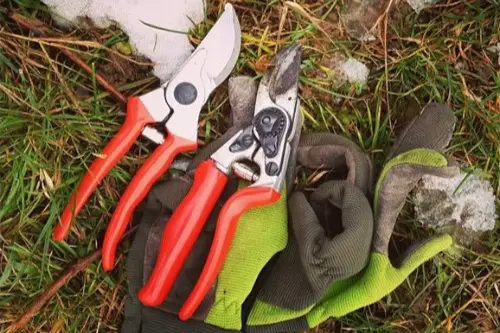
Before mass production, blacksmiths crafted shears by hand—each pair slightly different in balance and finish. Their hand-forged steel blades were built for precision and endurance. These tools were passed down through generations, often engraved with initials or local maker’s marks. That handmade quality makes them both functional and collectible.
Restorers love bringing old shears back to life, sharpening and oiling them to working order. Their patina tells the story of years spent trimming hedges and shaping gardens. Collectors value examples with wooden handles, brass fastenings, and visible blacksmith details. They stand as a testament to when tools were built to last a lifetime.
4. Dibbles and Dibbers
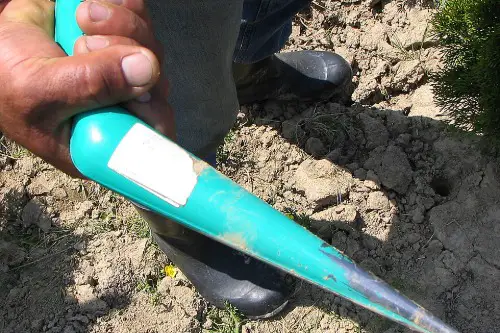
Simple yet ingenious, dibbles—also called dibbers—were used for making planting holes in the soil. Early versions were turned from hardwood, sometimes with brass tips for durability. Some had decorative carvings or measurements etched along their length for spacing seeds evenly. Collectors adore their rustic simplicity and practical history.
Because they’re small and easy to display, they’ve become favorites for farmhouse and cottage-style interiors. Antique versions often show the wear of many seasons, giving them authentic charm. Some rare 18th- and 19th-century models were even silver-tipped for wealthy gardeners. Each one represents the timeless act of putting seed to soil.
5. Cast Iron Lawn Rollers
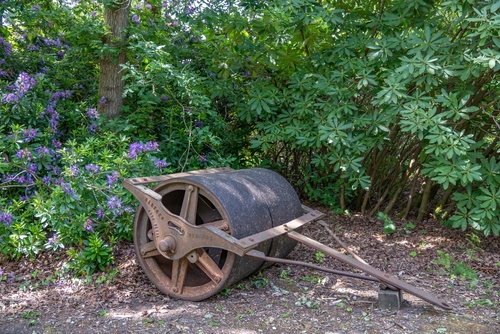
Long before power equipment, gardeners used cast iron rollers to flatten and firm the soil. These hefty tools often came with ornate iron handles or embossed maker names. They were built for large estate gardens, where neat lawns symbolized status and care. Their sheer durability means many still exist today, often repurposed as vintage garden art.
Collectors value them for their industrial aesthetic and historical significance. Some prefer those with visible company logos, like Ransomes or Shanks. Despite their weight, they’re surprisingly sought after for display in landscape designs. They serve as reminders of an era when gardening demanded both muscle and pride.
6. Galvanized Watering Cans
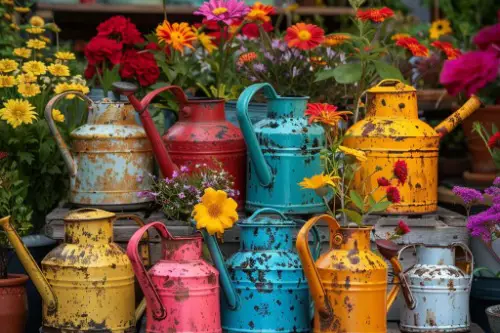
Before plastic became commonplace, galvanized steel watering cans were garden essentials. Their design was both functional and elegant—long spouts for reach and balanced handles for control. Brands like Haws in England perfected the form in the late 1800s. Original examples with maker’s stamps are particularly collectible today.
These cans often develop a beautiful patina over time, making them popular for rustic displays. Some collectors seek out variations with detachable roses or unique spout shapes. Their enduring charm lies in their blend of utility and craftsmanship. Even dented or worn versions have visual appeal that modern reproductions can’t quite match.
7. Copper Plant Labels
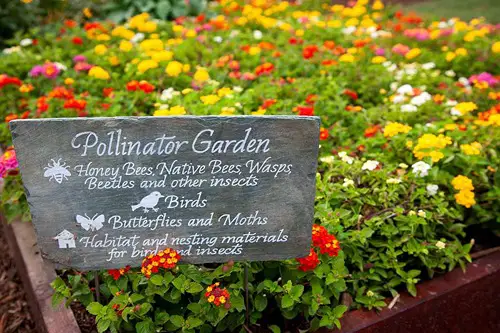
Long before plastic tags, gardeners marked their plants with copper labels etched or engraved by hand. Over time, these developed a rich green patina that made them even more attractive. Many were made for estate gardens or botanical collections, bearing Latin names or growing instructions. Their mix of artistry and science draws both gardeners and antique lovers.
Because they were meant to be reused, they’re durable and often beautifully aged. Some collectors frame them as mini artworks or use them again in their own gardens. Sets from the early 1900s are especially prized when still intact. They capture the quiet elegance of pre-industrial horticulture.
8. Cast Iron Garden Sprinklers

Before plastic hoses and sprinklers became the norm, cast iron models ruled the lawns of the early 1900s. These sprinklers were often shaped like animals or geometric patterns and built to last for decades. Collectors love their craftsmanship and quirky charm, especially those with working mechanisms still intact. Some rare models from makers like Rain King or Nelson can fetch hundreds of dollars today.
Beyond their mechanical appeal, they tell a story about a time when lawn care was a point of pride and innovation. Homeowners displayed these sprinklers as much as they used them. Their weight and intricate designs speak to a bygone era of quality manufacturing. Today, many find new life as rustic garden décor or display pieces in vintage collections.
9. Cast Iron Plant Stands
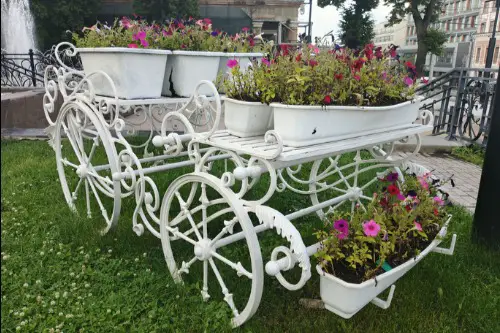
In the Victorian era, cast iron wasn’t just for fences and furniture—it graced gardens in the form of intricate plant stands. These pieces often featured floral motifs and scrolling legs. Because they were made for conservatories and patios, many survived the elements surprisingly well. Collectors love them for their blend of durability and decoration.
Original examples often have maker’s marks from English foundries. Their ornate designs make them perfect for displaying modern plants in a vintage way. Reproductions exist, but true antiques have a weight and detail that’s hard to fake. They represent the era’s obsession with turning gardening into an art form.
10. Seed Cleaning Screens
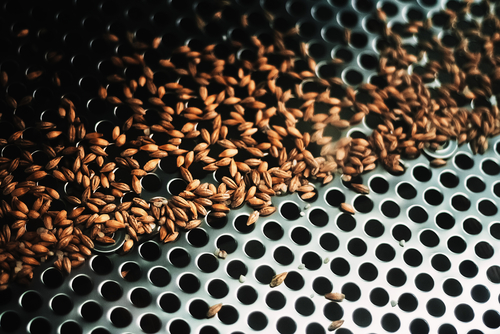
Before mechanical sorters, gardeners and farmers used framed mesh screens to separate seeds from chaff. These wooden frames came in different mesh sizes and were stacked for efficiency. They’re simple tools, but ones that played a key role in small-scale agriculture. Collectors now prize them for their utilitarian beauty.
Many are displayed as wall décor in farmhouses or potting sheds. The craftsmanship—often tight joints and hand-stretched wire—reflects early 20th-century design. Some screens bear stenciled company names or sizes, adding authenticity. They’re tangible reminders of how much work went into growing food before automation.
11. Vintage Hand Cultivators
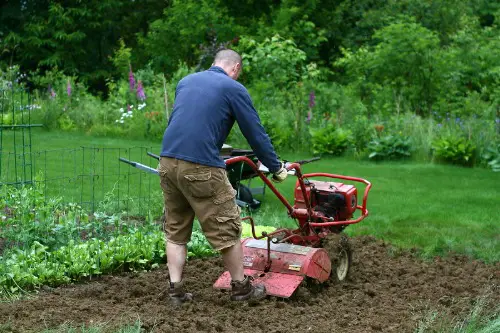
These multi-pronged tools were the predecessors to modern tillers, used to break up soil and remove weeds. Early models had cast iron heads and wooden handles worn smooth with use. Their durability and efficiency made them indispensable for generations of gardeners. Today, they’re beloved for their rugged simplicity.
Collectors enjoy restoring them for use or display. The most desirable pieces retain original paint or markings from companies like Planet Jr. or Keystone. Their ergonomic designs were ahead of their time, proving old tools often did the job just as well. They embody the spirit of hands-on, practical gardening.
12. Stoneware Plant Pots
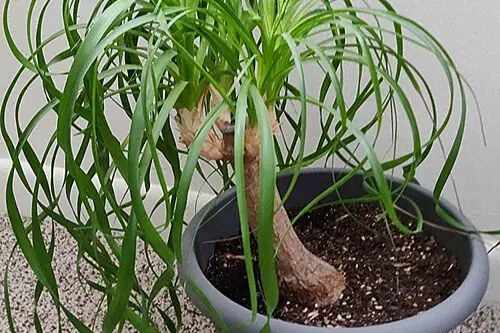
Before terracotta became the go-to, many gardeners used salt-glazed stoneware pots. These thick, heavy containers kept roots cool and retained moisture beautifully. They were often locally made and came in soft earth tones or glazed finishes. Their durability means many survived decades of outdoor use.
Collectors love their tactile quality and neutral colors that fit into modern décor. Some pieces carry potter’s marks, adding to their appeal. English and American examples from the 1800s are especially valued. They bridge the gap between pottery and horticulture in a uniquely functional way.
13. Garden Scythes
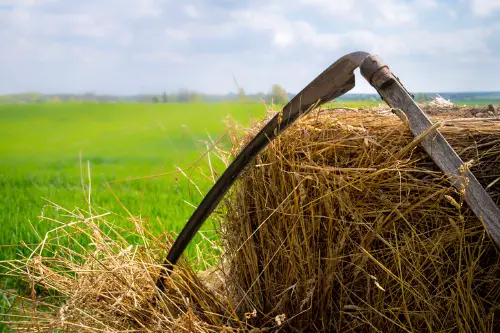
The scythe may look medieval, but it remained a vital garden and farm tool well into the 20th century. Its long, curved blade and wooden snath were designed for efficient cutting of grass and grain. Skilled users could mow large areas quickly and quietly. Collectors today admire them for their graceful design and historical relevance.
Old scythes with hand-forged blades or curved ash handles are especially sought after. Many are mounted as rustic wall art or kept as conversation pieces. They symbolize the strength and rhythm of traditional manual labor. In the right hands, they were as elegant as they were effective.
This post 13 Old Garden Tools That Are Now Sought-After Collectibles was first published on Greenhouse Black.
